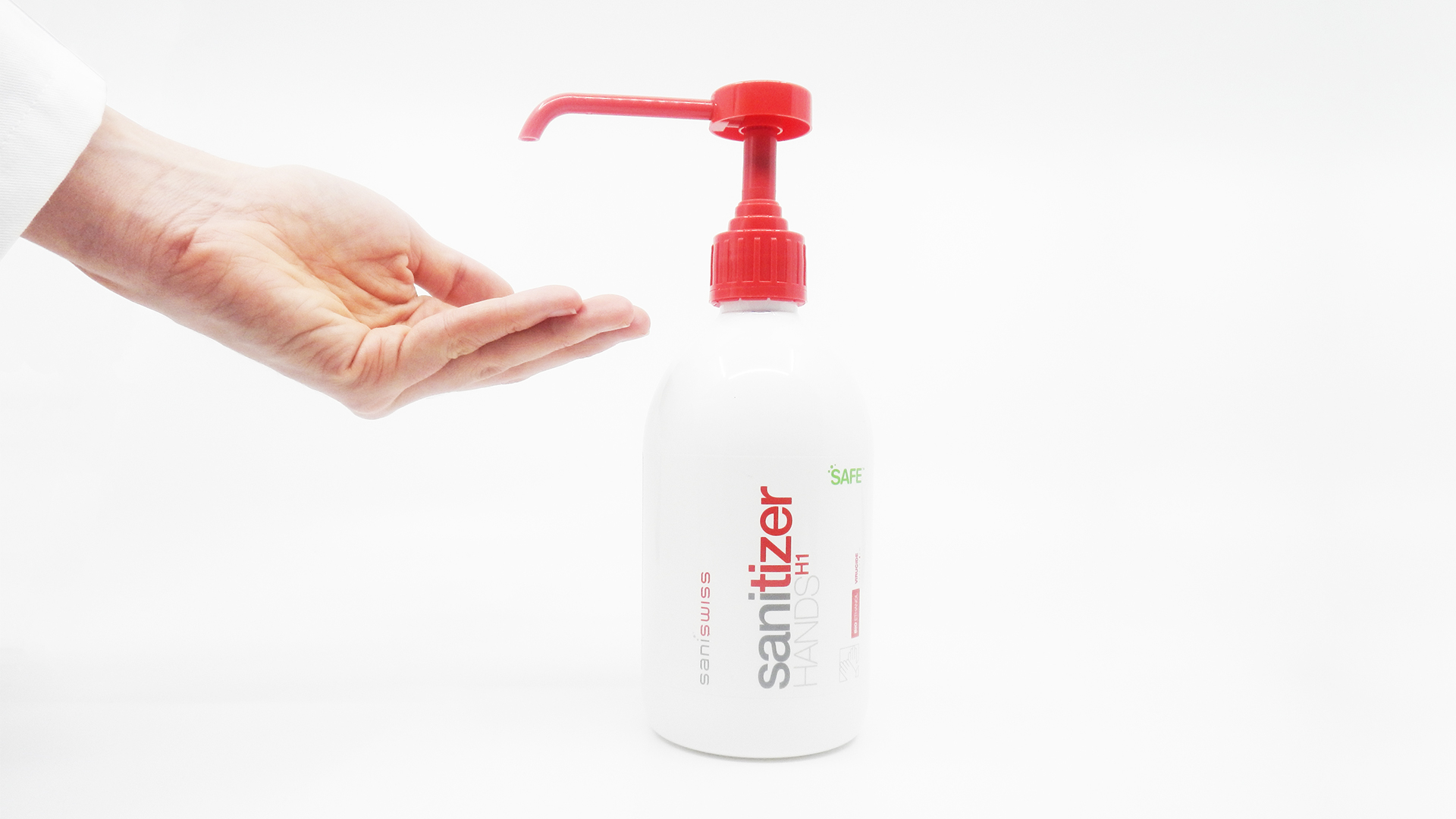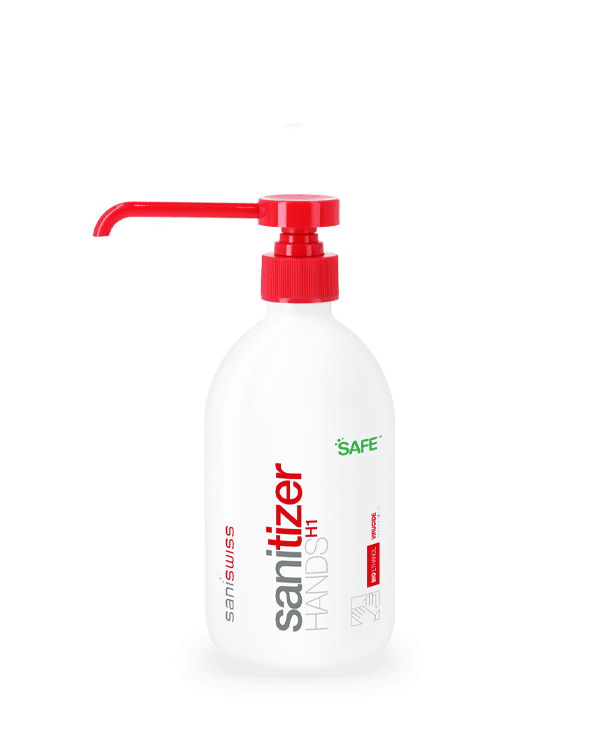In the era of the COVID-19 pandemic, hand hygiene became something we got used to living with on a daily basis. From one day to another we found ourselves equipped with an alcohol-based hand-rub (ABHR). Today, hand-rubbing for 30 seconds grew into an unmistakable gesture. However, we should not omit the fact that ABHR is essential not exclusively during the virus epidemic. It’s a solution to get rid of the pathogens or simply clean your hands when far from the source of water.
WHY SHOULD WE CHOOSE SANITIZERS WISELY?
With the high demand at the beginning of 2020, we faced a shortage of raw materials increasing sanitizer price, and at the same time, the emergence of new hand sanitizer “brands”. This in turn led to the appearance of non-compliant and most probably not virucide ABHRs on the market. The detailed composition of these products was not specified, although an antibacterial activity or a disinfectant activity was claimed on the labels. Unfortunately, users were not always aware of the bottle’s contents, which can greatly impact the product’s efficacy against the recent coronavirus 2 (SARS-CoV-2).

HOW TO DISTINGUISH WHETHER SANITIZER IS OR IS NOT COMPLIANT?
Compliant hand sanitizers are called biocides, and they are certified to have a disinfectant activity. To claim a biocide efficacy against a group of microorganisms, it must be tested against currently available European Standards (EN) which are strictly regulated. European Standards are technical standards ratified by one of the European standards organizations such as the European Committee for Standardisation. A hand sanitizer is proven to have virucide activity only when compliant with the standard EN 14476. It is worth noting that additionally, it should contain at least 60% of alcohol concentration, as recommended by the WHO.
NOT A RANDOM CHOICE OF ALCOHOL
Customers should be aware that there are only three types of alcohol that are allowed in hand sanitizers:
- Ethanol (ethyl alcohol),
- N-propanol (propyl alcohol),
- Isopropanol (isopropyl alcohol).
Compliant products can contain either one of the alcohols mentioned above with a min. the concentration of 60%, or a combination of alcohols resulting in a total concentration of min. 60%. Interestingly, the simplest chemical from the alcohol class, namely methanol (methyl alcohol) is not advised to be used in hand sanitizers due to its toxicity and severe side effects. Currently, state-of-the-art companies use ethanol as the main alcohol, which despite higher prices can be obtained with sustainable methods.
KEEP YOUR HANDS MOIST
Extensive use of hand sanitizers based mostly on N-propanol and isopropanol, which are cheaper in the production might be harsh and erosive for the skin. Thus, it is important that hand sanitizers contain a moisturizing molecule, which will prevent skin damage. These substances are called humectants and their role is to counteract the dehydrating properties of alcohol. A humectant is often a molecule with several hydrophilic groups, most often hydroxyl groups; however, amines and carboxyl groups, sometimes esterified, can be encountered as well. The most widely used humectant is glycerin, a natural hydrating agent. The choice of humectant should be also considered an important factor as some of them might cause allergy.

TAKE HOME MESSAGE
A hand sanitizer is effective against COVID-19 only if:
- It is compliant with the standard EN 14476 (claims a virucide activity)
- It contains at least 60% alcohol, or a concentration between 520 and 630 mg/g (only ethanol, n-propanol, and isopropanol)
Moreover, be a conscious customer and check whether your hand sanitizer does not contain methanol (recent studies advise avoiding formulations containing methanol) and comprise hypoallergenic humectant.
Hand disinfection with an alcohol-based hand sanitizer requires hands to be visibly clean and should be performed following WHO recommendations. In case of interest, please check: WHO Website – SAVE LIVES : Clean Your Hands
Bibliography
- ILNAS EN 14476+A1 Chemical disinfectants and antiseptics – Quantitative suspension test for the evaluation of virucidal activity in the medical area – Test method and requirements (Phase 2/Step 1)
- WHO Guidelines on Hand Hygiene in Health Care: First Global Patient Safety Challenge Clean Care Is Safer Care. Geneva: World Health Organization; 2009. 12, WHO-recommended handrub formulations. Available from: https://www.ncbi.nlm.nih.gov/books/NBK144054/
- Berardi A, Perinelli DR, Merchant HA, Bisharat L, Basheti IA, Bonacucina G, Cespi M, Palmieri GF. Hand sanitisers amid CoViD-19: A critical review of alcohol-based products on the market and formulation approaches to respond to increasing demand. Int J Pharm. 2020 Jun 30;584:119431. doi: 10.1016/j.ijpharm.2020.119431. Epub 2020 May 16. PMID: 32461194; PMCID: PMC7229736.
- Jing JLJ, Pei Yi T, Bose RJC, McCarthy JR, Tharmalingam N, Madheswaran T. Hand Sanitizers: A Review on Formulation Aspects, Adverse Effects, and Regulations. Int J Environ Res Public Health. 2020 May 11;17(9):3326. doi: 10.3390/ijerph17093326. PMID: 32403261; PMCID: PMC7246736.
- Tamimi AH, Maxwell S, Edmonds SL, Gerba CP. Impact of the use of an alcohol-based hand sanitizer in the home on reduction in probability of infection by respiratory and enteric viruses. Epidemiol Infect. 2015 Nov;143(15):3335-41. doi: 10.1017/S0950268815000035. Epub 2015 Mar 31. Erratum in: Epidemiol Infect. 2015 Nov;143(15):3342. PMID: 25825988.
- Hakimi AA, Armstrong WB. Hand Sanitizer in a Pandemic: Wrong Formulations in the Wrong Hands. J Emerg Med. 2020 Nov;59(5):668-672. doi: 10.1016/j.jemermed.2020.07.018. Epub 2020 Sep 10. PMID: 32921540; PMCID: PMC7837308.
- Singh D, Joshi K, Samuel A, Patra J, Mahindroo N. Alcohol-based hand sanitisers as first line of defence against SARS-CoV-2: a review of biology, chemistry and formulations. Epidemiol Infect. 2020 Sep 29;148:e229. doi: 10.1017/S0950268820002319. PMID: 32988431; PMCID: PMC7550876.
- Golin AP, Choi D, Ghahary A. Hand sanitizers: A review of ingredients, mechanisms of action, modes of delivery, and efficacy against coronaviruses. Am J Infect Control. 2020 Sep;48(9):1062-1067. doi: 10.1016/j.ajic.2020.06.182. Epub 2020 Jun 18. PMID: 32565272; PMCID: PMC7301780.
- Suchomel, M., Weinlich, M., & Kundi, M. (2017). Influence of glycerol and an alternative humectant on the immediate and 3-hours bactericidal efficacies of two isopropanol-based antiseptics in laboratory experiments in vivo according to EN 12791. Antimicrobial resistance and infection control, 6, 72. doi.org/10.1186/s13756-017-0229-5
- Dear K, Grayson L, Nixon R. Potential methanol toxicity and the importance of using a standardised alcohol-based hand rub formulation in the era of COVID-19. Antimicrob Resist Infect Control. 2020 Aug 8;9(1):129. doi: 10.1186/s13756-020-00788-5. PMID: 32771064; PMCID: PMC7414286.



